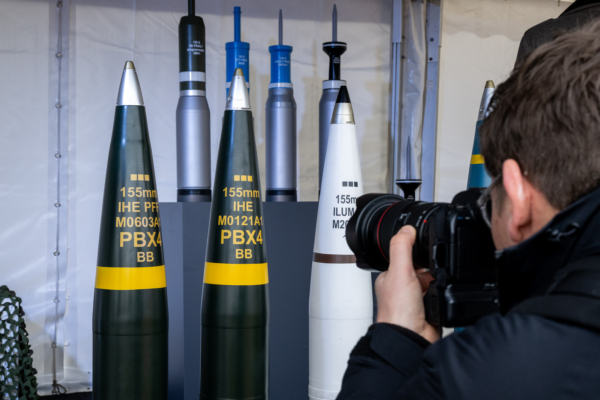Amid escalating international tensions, the global aerospace and defense industry is poised to reach record revenue levels in the next three years, fueled by a surge in orders for new weaponry.
According to a report by the UK’s Financial Times on Monday, research firm Vertical Research Partners predicts that by 2026, the top 15 defense contractors globally will rake in $52 billion in cash revenue, nearly double the figure from 2021.
With Russia’s full-scale invasion of Ukraine and escalating tensions in the Middle East and Asia, governments around the world are urgently boosting military budgets, driving up sales for defense enterprises worldwide.
By the end of 2026, the top five US defense contractors are expected to have $26 billion in cash inflow, more than doubling the figure from the end of 2021. Boeing is not included in this figure as a significant portion of its revenue comes from the commercial aerospace sector.
In Europe, cash revenue for companies like BAE Systems in the UK, Rheinmetall in Germany, and Saab in Sweden is projected to grow by over 40% due to increased contracts for ammunition and missiles.
The US has allocated nearly $13 billion in aid for Ukraine, Taiwan, and Israel through defense assistance bills, which will go towards weapon production by the top five US defense contractor groups.
These companies include Lockheed Martin, Raytheon Technologies, Northrop Grumman, Boeing, General Dynamics, and their suppliers.
Over the past three years, the UK Ministry of Defence has pledged £7.6 billion in military aid to Ukraine, including funds for replenishing armaments.
The surge in defense expenditures by governments has pushed orders close to historic highs. Since most of the defense companies’ sales are only recorded after delivery of weapons, new contracts typically take several years to translate into higher sales figures.
However, the growing cash flow has sparked discussions within the industry on how to best utilize these funds.
“This will involve billions of dollars, and these companies typically do not like to have a large amount of cash on their balance sheets,” said analyst Robert Stallard from Vertical Research Partners. “Stock buybacks and dividends will be one of the solutions.”
Prior to the recent wave of new orders, companies had already put billions of dollars into stock buybacks, with some taking additional leverage measures for this purpose.
According to data from Bank of America, last year saw the strongest buyback actions in the aerospace and defense industry in the past five years in the US and Europe. However, the buyback amounts still fall significantly below other industries.
In the increasingly competitive European space industry, more mergers and acquisitions are expected. Airbus, Thales, and Leonardo are considering consolidating certain space operations to establish a pan-European space alliance.
While defense spending is likely to remain robust in the coming years, recent orders are expected to gradually slow down, especially following the conclusion of the Russia-Ukraine war.

